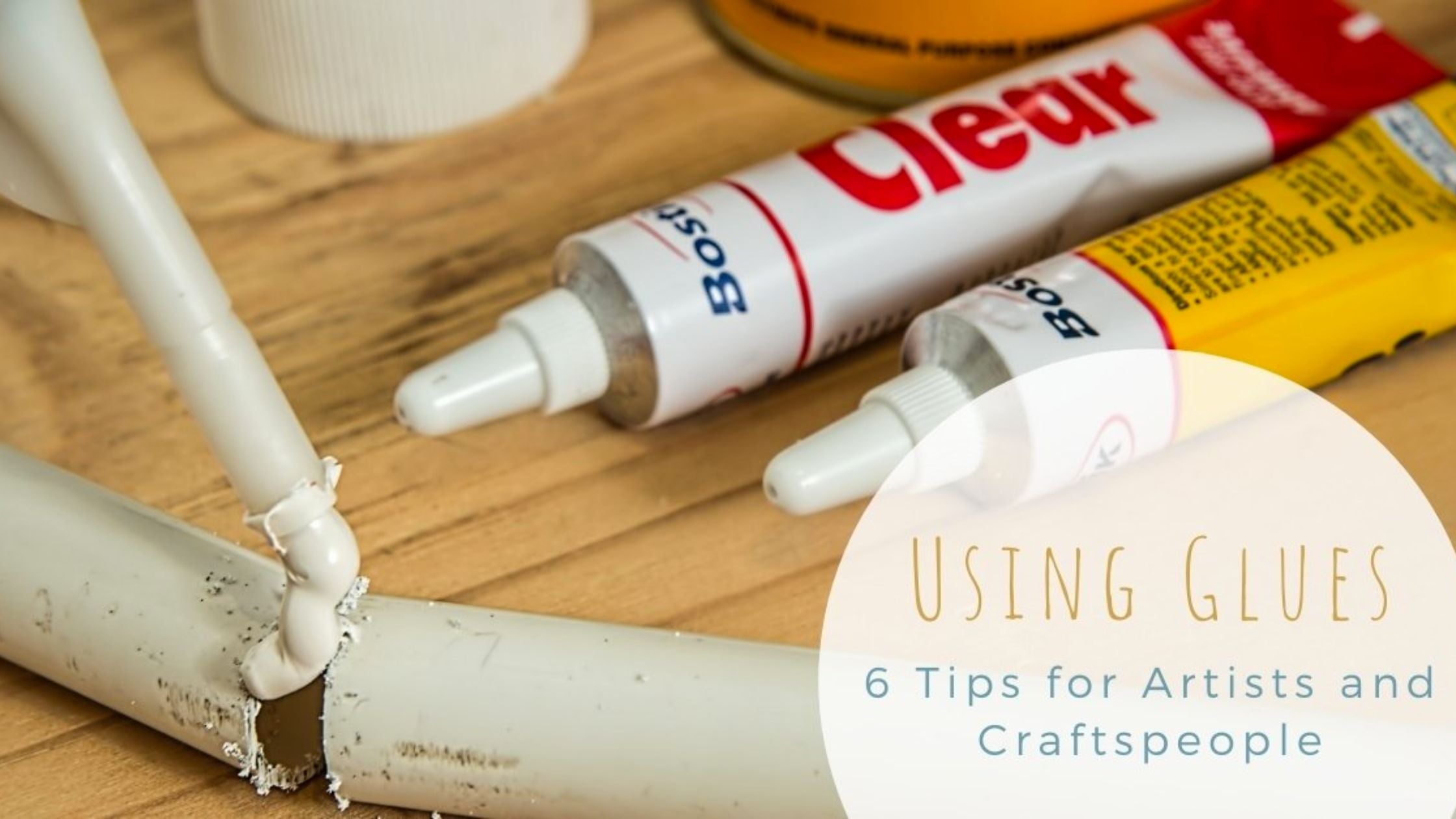Artists and craftspeople often use some form of glue as they create things - and also, unfortunately, to repair things. But choosing which glue to use can be difficult. There are lots of different types of glue; some with very specific applications.
This article introduces you to some glues that are popular with artists and craftspeople, including glues for use specifically with glass. In two tables, we'll explain each glue's application, then finish with six tips on using glue most effectively.

What are you gluing and why are you gluing it?
The first table below introduces some general craft glues commonly used by artists and craftspeople. The second table introduces glues that attach glass to glass (e.g., assembling glass components, repairing glass pieces) and are transparent when dry. There is some overlap between the tables, because some general craft glues (e.g. epoxy) can be used with glass. Terms in italics are brand names.



It ain't what you glue, it's the way that you glue it.
Here are some general tips on how to use your chosen glue most effectively.
1. Work Cleanly
Thoroughly clean and dry any surface to be glued.
2. Work Wisely
Check the labels for instructions and uses. There is a confusing array of brands, names and terms associated with glues! Check the internet for local alternatives to overseas products. If the finished article is destined for outdoors, check that your chosen glue is suitable.

3. Work Sparingly
Use a small amount of glue at a time. Place it in a disposable container and reseal the main container. Overnight, cover any excess glue in cling film.
4. Work Neatly
Work neatly to avoid getting glue anywhere but on the surface to be glued. It's easier to remove excess glue while it's soft, rather than once it has dried hard. Use water and a cloth or paper towel to wipe up any excess glue; use a bamboo skewer to clean excess glue from hard-to-reach areas.

5. Work Safely
Follow basic Occupational Health and Safety rules, including wearing light gloves. Be especially careful when using epoxy glues, because they are so effective that they can stick fingers together if left long enough! If using a glue indoors, beware of fumes.
6. Work Patiently
Most adhesives take around 24 hours to dry. Don't try to shorten the drying time of an adhesive by, for example, placing it in front of a heater as it will cause problems.Words by:

Authors,








